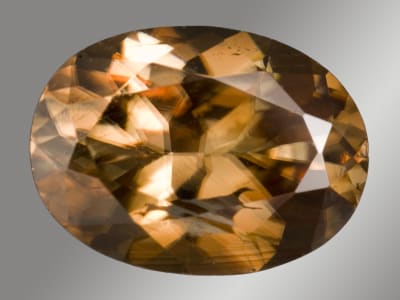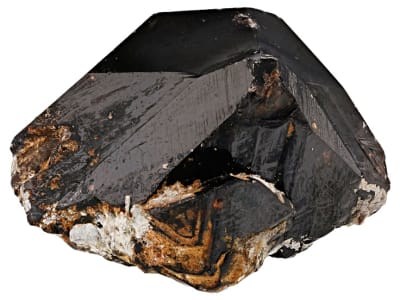The name Cassiterite is derived from the Greek word kassiteros, meaning “tin.” Cassiterite has been mined for tin since the Copper Age. It is prized by mineral collectors for its unusual twins and crystal habits. Clean, colorless gemstones are quite rare and stones above 2 carats are coveted by collectors. Stones show high dispersion that is twice as high as diamond. Cassiterite can be yellow to brown, reddish brown, brownish black to black.
General Information
Tolerance:(+0.009/-0.006)
LWUV: Inert
Cassiterite Colors
-
 Black
Black -
 Brown
Brown -
 Colorless
Colorless -
 Gray
Gray -
 White
White -
 Yellow
Yellow
Alternate Names
Tin Stone, Tin Ore, Wood Tin, Toad's Eye Tin
Countries of Origin
Myanmar; Cameroon; Papua New Guinea; Angola; Cambodia; Sudan; Malaysia; Kazakhstan; Portugal; Bosnia And Herzegovina; Armenia; Greece; Austria; Mongolia; Mozambique; Korea (the Republic of); Morocco; Unknown; Brazil; Algeria; Chile; Ecuador; Argentina; Iran (Islamic Republic of); Hungary; Japan; Ukraine; Belize; Belarus; Bolivia (Plurinational State of); India; New Zealand; Canada; Turkey; Belgium; Namibia; Finland; Italy; South Africa; Antarctica; Peru; Ethiopia; Germany; Tanzania, United Republic Of; Afghanistan; Burundi; Russian Federation; Fiji; Viet Nam; Czechia; United States of America; Egypt; Chad; Somalia; Madagascar; Thailand; United Kingdom of Great Britain and Northern Ireland; Saudi Arabia; Sweden; Pakistan; Malawi; China; Ireland; Poland; Slovakia; Bulgaria; France; Jordan; Nigeria; Serbia; Kyrgyzstan; Croatia; Cote D'Ivoire; Romania; Niger; Sri Lanka; Rwanda; Uzbekistan; Switzerland; Spain; Liberia; Burkina Faso; Mauritania; Norway; Botswana; Swaziland; Congo (the Democratic Republic of the); Mexico; Uganda; Zimbabwe; Suriname; Australia; Greenland; Tajikistan; Indonesia
History
The early Copper Age metal workers added tin to copper to create bronze. The earliest known use of tin to create bronze is in the Near East and Baltic Region and dates to about 3000BCE. One of the earliest known mines dates to around 2500BCE and were in the Ore Mountains that lie between what is now Germany and the Czech Republic. It is thought that tin has been mined in Southwest England, Northwest France, and the Iberian Peninsula since about 2000BCE. Cornwall, England was a major producer of tin up into the 19th century. Mining in the East dates to around the same time as Europe. The Asian tin belt stretched from Yunnan, China down through the Malay Peninsula. Most tin production today comes from the Bolivian mining belt and the East Asian tin belt.
Care
Normal care.

